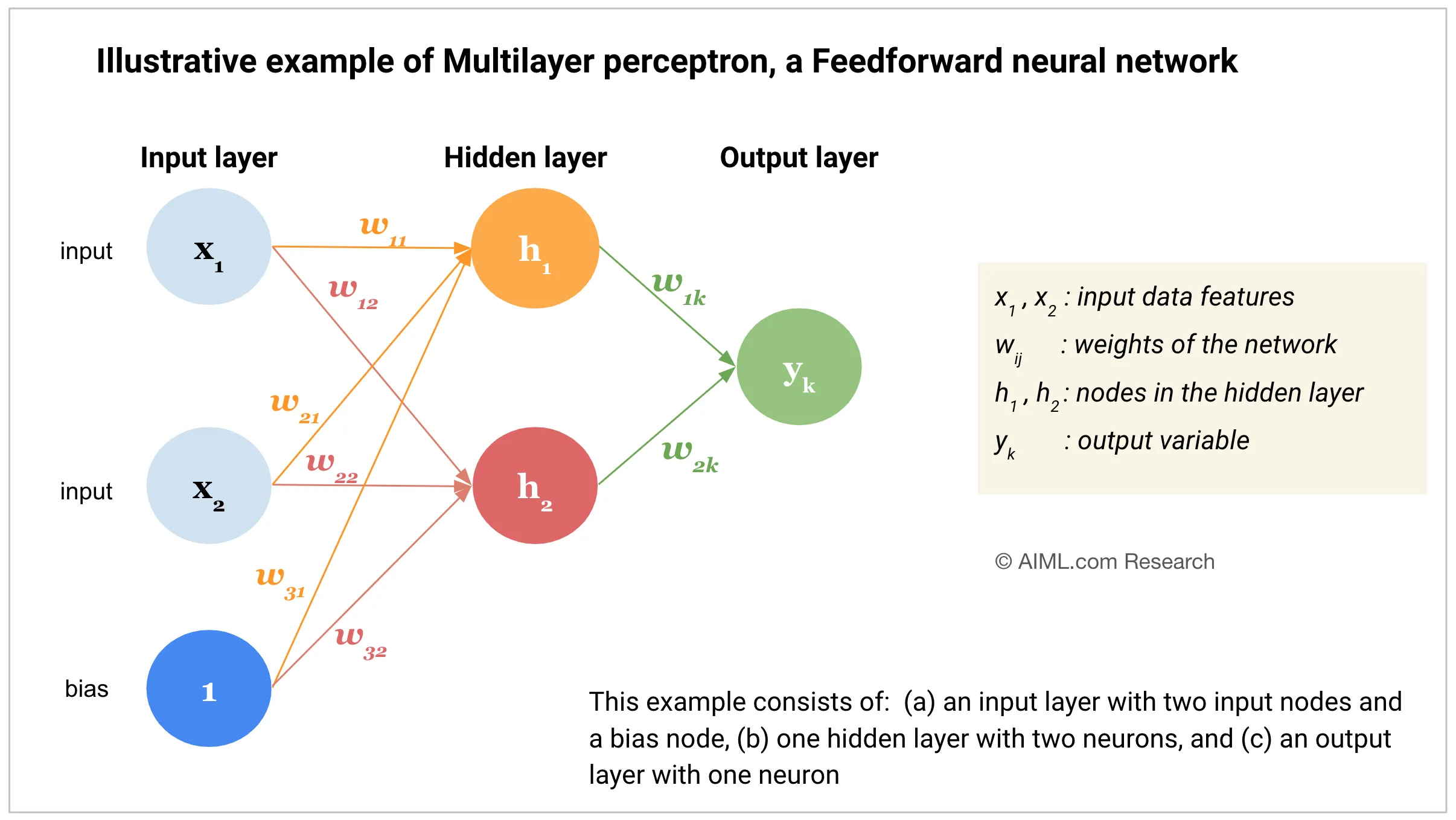1. Neural Nets: Overview
Neural Networks
- A neural network (or neural net) is a machine learning model inspired by the human brain. It consists of layers of interconnected nodes (neurons) that process and transform input data to make predictions or classifications.
Architecture of a simple Neural Net or Multi-Layer Perceptron (MLP)
- It consists of 3 layers

Input Layer
- This layer receives raw input features.
- Each node represents / corresponds to a feature in the dataset
Hidden Layers
- Performs computation and extracts patterns from the input data
- There can be many hidden layers, depending on the task’s complexity.
Output Layer
- Produces the model’s predictions.
- Softmax activation for classification task
- Linear activation for Regression task
Neurons, Weights and Biases
- Each layer in a Neural Net (NN) consists of neurons
-
Each neuron applies a weighted sum of its inputs followed by an activation function.
-
\[z = W_1x_1 + W_2x_2 + ... + W_nx_n + b\]
- x1, .., xn are the input features.
- W1, .., Wn are the weights associated with each input
- b : bias
- z : weighted sum which is passed through an activation
Forward Propagation
- Data moves from the input layer through the hidden layers to the output layer.
- Each layer processes the input using weights, biases, and activation functions ans passes the output to the next layer.
Loss Function and Backpropagation
- Loss function is used to measure how far away the predicted value from the actual value / ground truth.
- Examples of loss funtions :
- Mean Squared Error (MSE) : for regression tasks.
- Cross-Entropy Loss : for classification tasks.
- Backpropagation is an algorithm used to update the weight of a neural net.
-
It computes the gradient of the loss function with respect to each weight using the chain rule (of calculus) and updates the weights using an optimization algorithm (eg. Stochastic Grdient Descent (SGD) or Adam).
- Covered backpropgation in depth here.
-
Neurons apply weighted sums and activation functions to learn patterns.
-
Forward propagation moves data through the network
-
backpropagation updates weights to minimize error.
-
The choice of architecture, activation functions, and optimization techniques affects the performance of a neural network